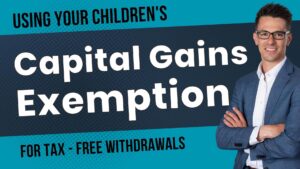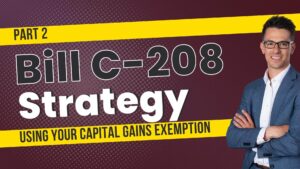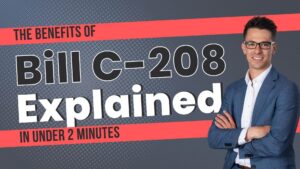[vc_row][vc_column][vc_column_text]In Canada, we have a progressive tax system, which means lower-income earners will pay less tax on a percentage basis compared to higher-income earners.
Tax Brackets Explained
Here are the combined Manitoba and Federal tax brackets for 2020:
| Provincial and Federal Tax Rates (Combined) | |
| Taxable Income | Tax Rate |
| $0 to $33,389 | 25.80% |
| $33,389-$48,535 | 27.75% |
| $48,535-$72,164 | 33.25% |
| $72,164-$97,069 | 37.90% |
| $97,069-$150,473 | 43.40% |
| $150,473-$214,368 | 46.40% |
| Over $214,368 | 50.40% |
Example:
If your current income for the year is $72,164, you’re sitting in the 33.25% tax bracket. If you make one additional dollar, you’ve now moved to the 37.90% bracket, but it’s essential to understand that you’ll only incur taxes at 37.90% on that additional dollar, not on your full $72,165 of income.
I’ve often heard, “I don’t want to make more money because I’ll jump tax brackets, and I’ll have to pay more taxes on my full income.” That’s incorrect; you’ll only pay higher taxes on the income you make within your new tax bracket.
How is this relevant if you sell your farm?
Farmland in Manitoba has been an excellent investment (see Is Farmland a Good Investment?) that’s been growing by just over 5% per year since 1986. If you sell, you will most likely have a capital gain.
Example:
If you purchased land 40 years ago for $500,000 and it’s now worth $4,500,000 today, you’ll have a $4,000,000 capital gain if you sell. Fifty percent of this capital gain must be added to your taxable income, so in our example, you’d have to add $2,000,000 to your taxable income.
Taking a look at our tax brackets above, $2,000,000 of taxable income would quickly put you in the 50.40% tax bracket. Every dollar of income above $214,368 would be taxed at 50.40%.
This transaction would result in close to $1,000,000 in taxes owing, so you’d be left with $3,500,000 after having sold for $4,500,000. The joys of taxes!
Don’t make your tax situation worse by triggering other taxable income!
You’ve just paid $1,000,000 to the government. Don’t make things worsts by triggering other income (CPP, RRSP, RRIF, Rental, T4, etc.) in the year you sell. Since you’re in the 50.40% tax bracket, half of this income will be lost to taxes.
*100% of OAS would be lost due to the clawback rules, which will be discussed in a later article.
My recommendations
Based on your age my recommendations will change but try to do the following (if possible) in the year you sell your farm
- Defer CPP if you’ll be selling soon
- Defer OAS if you’ll be selling soon
- Don’t make any RRSP withdrawal
- Only withdraw your minimum from your RRIFs
- Don’t trigger any other taxable gains
- Do trigger capital losses
- If renting, receive your payment a year earlier, or defer to the following year
- Live off your TFSA savings and the proceeds of your sale
What about the farm capital gain exemption?
The capital gain exemption is a great way to lower your taxable income. If your farm qualifies, you can reduce your capital gain by $1,000,000.
Building on our previous example…
Because of the capital gain exemption, your $4,000,000 gain is now $3,000,000. As we reviewed earlier, fifty percent of this capital gain is considered taxable income. In this scenario, instead of adding $2,000,000 of taxable income, you’d be adding $1,500,000. Your overall tax bill would be approximately $750,000, so you’re saving $250,000 of taxes, but you’re unfortunately still in the 50.40% tax bracket, so everything we discussed above would still apply. Any additional taxable income you’d generate that year would incur taxes at 50.40%.
Today, I’ve used a straightforward scenario to get my point across, but do take comfort in knowing that there are plenty of strategies to reduce your overall tax bill when you sell. I won’t go into them today, but if you’re planning on selling soon, I will start talking with your team of experts as quickly as possible, as some strategies take 3+ years to implement.
[/vc_column_text][vc_column_text]









